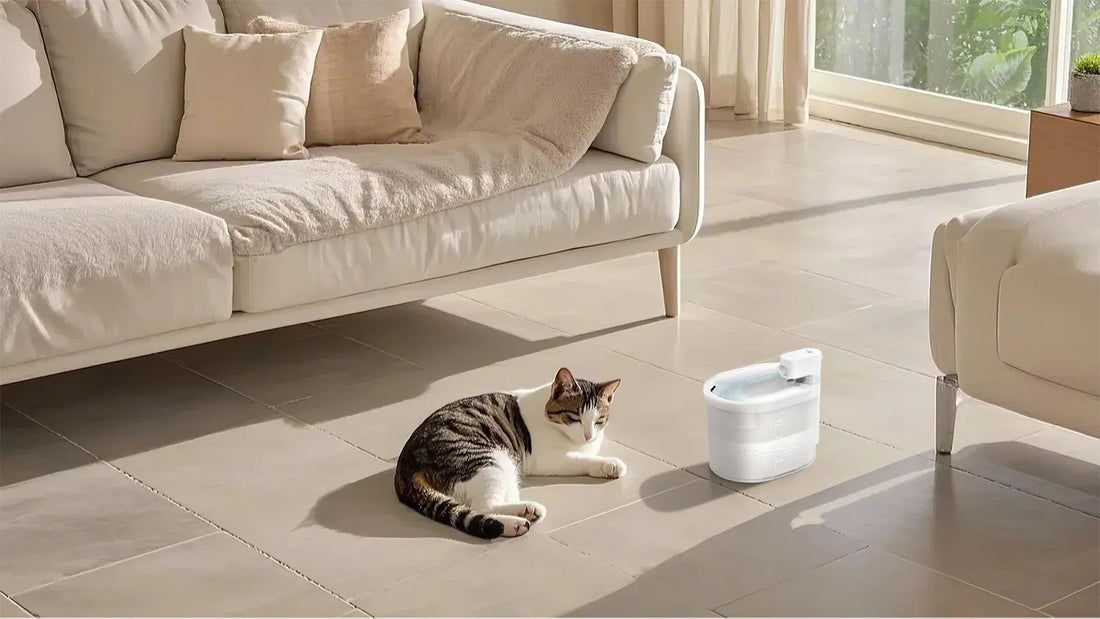Training your cat to use the litter box can seem daunting, but with the right approach, it can be a smooth and stress-free process. Whether you're a new cat owner or dealing with a sudden litter box aversion, understanding your cat's needs and behavior is key to success. This guide will walk you through everything you need to know to get your cat to use the litter box consistently.
Understanding Your Cat's Needs
Cats are naturally clean animals, and their instinct to bury their waste makes them inclined to use a litter box. However, several factors can influence their behavior, including the type of litter, the location of the box, and their overall health. By addressing these factors, you can create an environment that encourages your cat to use the litter box.
Choosing the Right Litter Box
The first step in training your cat is selecting the right litter box. Size matters—ensure the box is large enough for your cat to move around comfortably. Some cats prefer covered boxes for privacy, while others may feel trapped and avoid them. Experiment with different types to see what your cat prefers.
Selecting the Best Litter
Cats can be picky about the texture and scent of their litter. Unscented, clumping litter is often a safe choice, but some cats may prefer non-clumping or natural alternatives like pine or corn-based litter. Introduce new litter gradually by mixing it with the old type to avoid overwhelming your cat.
Placing the Litter Box Strategically
Location is crucial when it comes to litter box training. Place the box in a quiet, easily accessible area away from high-traffic zones and loud noises. Avoid placing it near your cat's food and water, as cats prefer to keep their eating and elimination areas separate. If you have a multi-level home, consider placing a litter box on each floor.
Maintaining Cleanliness
Cats are more likely to use a clean litter box. Scoop waste daily and replace the litter entirely at least once a week. If the box becomes too dirty, your cat may start avoiding it and seek out alternative spots. Regular cleaning also helps prevent odors that can deter your cat.
Addressing Behavioral Issues
If your cat suddenly stops using the litter box, it could be due to stress, anxiety, or a medical issue. Changes in the household, such as a new pet or a move, can disrupt your cat's routine. In such cases, provide extra attention and reassurance. If the problem persists, consult your veterinarian to rule out underlying health problems.
Positive Reinforcement
Reward your cat with treats or praise when they use the litter box correctly. Positive reinforcement helps reinforce good behavior and encourages your cat to repeat it. Avoid punishing your cat for accidents, as this can create fear and worsen the problem.
Training Kittens and Older Cats
Kittens often learn to use the litter box by observing their mother. If you're raising a kitten, place them in the box after meals or naps to encourage use. Older cats may require patience and gentle guidance, especially if they've developed bad habits. Consistency and a calm approach are essential for success.
Introducing Multiple Cats
In multi-cat households, provide one litter box per cat plus an extra one to prevent competition and territorial issues. Ensure each box is placed in a different location to give your cats options. Monitor their behavior to ensure everyone is using the boxes appropriately.
Common Mistakes to Avoid
Avoid using harsh chemicals to clean the litter box, as strong odors can deter your cat. Stick to mild, unscented cleaners. Additionally, don't place the box in a cramped or inconvenient location, as this can make your cat reluctant to use it. Lastly, be patient—training takes time, and every cat is different.
When to Seek Professional Help
If your cat continues to avoid the litter box despite your efforts, it may be time to consult a veterinarian or a feline behaviorist. They can help identify any medical or psychological issues and provide tailored solutions to address the problem.
By understanding your cat's needs and creating a comfortable, clean environment, you can successfully train them to use the litter box. With patience and consistency, you'll enjoy a harmonious relationship with your feline companion and a cleaner home.













